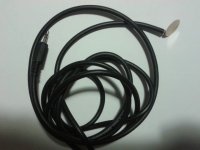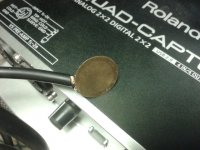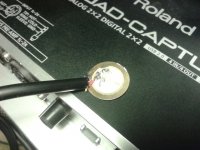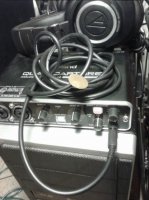Hi Friends..
It's crazy, I just made that diy transducer without knowing of this thread or any research about bone conduction for dealing with T, I was just thinking to myself a few days ago that since I was a kid we used to bite the tip of the classical guitar, seal our ears and play something just for the fun of hearing the sound coming out "from our heads". so I thought.. well.. that might be a better way for receiving the Neuromodulation treatment. so Iv'e researched and came up exactly with
@Steve headphones- Aftershockz

and that diy transducer. so I just made that transducer, came out pretty good. I experimented with it with ACRN, I am not sure what my conclusions are, I might pissed my T off a little cause it went louder since. I did just go back to ACRN with headphones.
but it's so cool you people were talking about this while I was doing it. though it was for different experiments





I am also into the sound and music fields and I am sure there got to be a way of treating T with audio!
I am in that quest of finding that way! I will be glad to join everyone who shares this vision.
I am using myself as a guinea pig

I tried many things as sweeping sounds, ACRN, noises, combinations and I have more things I would like to try. my T is at 13760Hz, and it took me a long time to figure it out. I was always thinking it was 13200Hz in the recent past but then I found out it was something else.
I think that this transducer I made really helped me finding out my T tone correctly, I managed to match the T with it much better than headphones although still, not easily. I was listening to my T and then attaching the transducer to my head next to my ear using a low volume for just a second, on and off for a few times to figure it out.. and I think it works better than headphones.
@Steve, with your new headphones, could you please try to see if it counts for you too? can you try matching your T with your new bone conducting headphones and compare your matching results to ordinary headphones? (starting with the ordinary headphones)
let's see if we are on to something.. knowing your T frequency for sure is important for any treatment.
no matter who will find this audio solution for treating T, I have a feeling that once it will be found it will be an amazing discovery that will turn to a practical treatment for T in the conventional medicine. just imagine...
for now it's like no one knows anything for certain and anything is still possible!
I wish we could have a place where we could make a list of possible experiments, for example, playing tones underwater using bone conduction (just joking.. or not?

), using filters to chop the sound.. come up with a series of tones in one way or another, different types of waves, with a logical explanation or not. anything that just sounds to be worth a try. who knows what we can come up with.. I know it will take time to make a difference but who knows.. if the right treatment will be discovered, maybe it will just make the T change a little in loudness or character after a short while..
if anyone thinks it's a good idea and thinks of a way of putting this kind of a list, I'll be happy to know!
I have just read this thread but didn't get into these researches yet, I am just about to do that.
If anyone has a suggestion of what can be tried in terms of these researches and creating any sounds or songs I am up for it.
p.s some it this research sounds similar to
what this guy did according to some research but he didn't do any pitch shifting. Thanks.. Roy.

 Member
Member




 ), using filters to chop the sound.. come up with a series of tones in one way or another, different types of waves, with a logical explanation or not. anything that just sounds to be worth a try. who knows what we can come up with.. I know it will take time to make a difference but who knows.. if the right treatment will be discovered, maybe it will just make the T change a little in loudness or character after a short while..
), using filters to chop the sound.. come up with a series of tones in one way or another, different types of waves, with a logical explanation or not. anything that just sounds to be worth a try. who knows what we can come up with.. I know it will take time to make a difference but who knows.. if the right treatment will be discovered, maybe it will just make the T change a little in loudness or character after a short while.. ), but the music has an energy and I noticed it is the only song that does this to me (for me).
), but the music has an energy and I noticed it is the only song that does this to me (for me). Founder
Founder